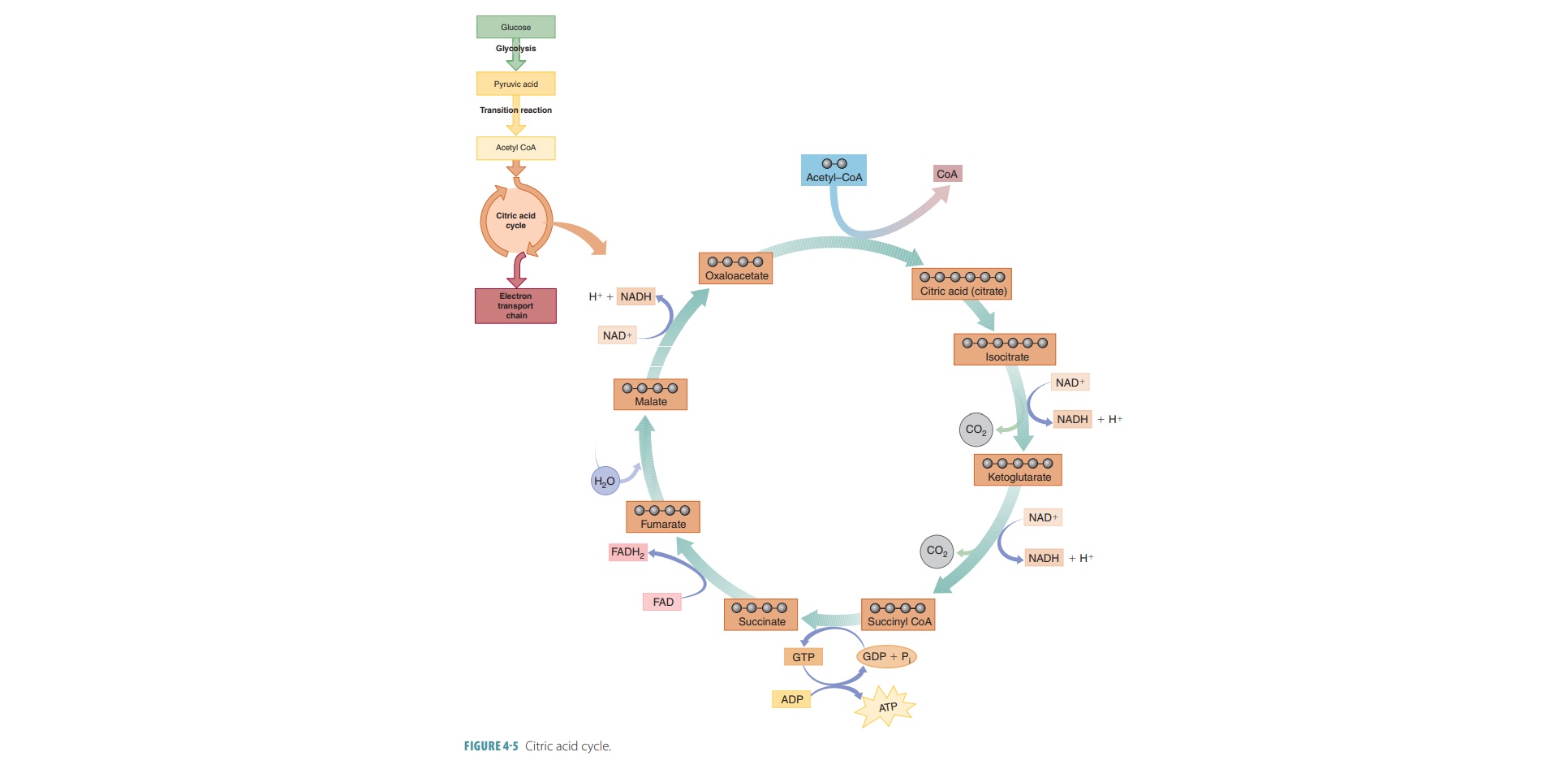
What is the Citric Acid Cycle? The Citric Acid Cycle, also known as the Krebs Cycle or TCA Cycle, is a series of chemical reactions used by all aerobic organisms to generate energy. This cycle takes place in the mitochondria, the powerhouse of the cell. It plays a crucial role in cellular respiration, breaking down glucose, fats, and proteins into carbon dioxide and water, producing ATP, the energy currency of cells. Understanding this cycle is key to grasping how our bodies convert food into usable energy. Ready to dive into some fascinating facts about this essential biological process? Let's get started!
The Basics of the Citric Acid Cycle
The Citric Acid Cycle, also known as the Krebs Cycle or TCA Cycle, is a crucial metabolic pathway that plays a key role in cellular respiration. This cycle helps cells generate energy by oxidizing acetyl-CoA derived from carbohydrates, fats, and proteins.
- The Citric Acid Cycle was discovered by Hans Krebs in 1937.
- It takes place in the mitochondria of eukaryotic cells.
- The cycle is named after citric acid, a six-carbon molecule formed in the first step.
- The Citric Acid Cycle is part of aerobic respiration, requiring oxygen to proceed.
- It consists of eight main steps, each catalyzed by a specific enzyme.
- The cycle generates high-energy molecules like ATP, NADH, and FADH2.
- Acetyl-CoA, the starting molecule, is derived from pyruvate, fatty acids, and amino acids.
- The cycle also produces carbon dioxide as a waste product.
Key Enzymes and Reactions
Enzymes are the workhorses of the Citric Acid Cycle, facilitating each step and ensuring the process runs smoothly. Let's look at some key enzymes and reactions.
- Citrate synthase catalyzes the first step, combining acetyl-CoA with oxaloacetate to form citrate.
- Aconitase converts citrate into isocitrate through a two-step process.
- Isocitrate dehydrogenase catalyzes the oxidative decarboxylation of isocitrate to alpha-ketoglutarate.
- Alpha-ketoglutarate dehydrogenase converts alpha-ketoglutarate into succinyl-CoA.
- Succinyl-CoA synthetase converts succinyl-CoA into succinate, producing GTP or ATP.
- Succinate dehydrogenase oxidizes succinate to fumarate, linked to the electron transport chain.
- Fumarase hydrates fumarate to malate.
- Malate dehydrogenase oxidizes malate to oxaloacetate, completing the cycle.
Energy Production and Efficiency
The Citric Acid Cycle is a powerhouse of energy production, converting biochemical energy into usable forms for the cell.
- Each turn of the cycle produces 1 ATP (or GTP), 3 NADH, and 1 FADH2.
- NADH and FADH2 are used in the electron transport chain to generate additional ATP.
- One glucose molecule results in two turns of the Citric Acid Cycle.
- The cycle is highly efficient, capturing about 40% of the energy from glucose oxidation.
- The remaining energy is lost as heat, which helps maintain body temperature.
Interconnections with Other Metabolic Pathways
The Citric Acid Cycle doesn't work in isolation; it interacts with various other metabolic pathways, making it a central hub in metabolism.
- It provides intermediates for amino acid synthesis.
- The cycle is linked to gluconeogenesis, the process of producing glucose from non-carbohydrate sources.
- Fatty acid oxidation feeds acetyl-CoA into the cycle.
- The cycle's intermediates can be used in the synthesis of heme, an essential component of hemoglobin.
- It plays a role in the urea cycle, helping to detoxify ammonia in the liver.
Regulation and Control
The Citric Acid Cycle is tightly regulated to meet the cell's energy demands and maintain metabolic balance.
- High levels of ATP inhibit key enzymes like citrate synthase and isocitrate dehydrogenase.
- ADP and AMP activate these enzymes, signaling the need for more energy.
- NADH, a product of the cycle, also inhibits several enzymes to prevent overproduction.
- Calcium ions can activate certain enzymes, linking muscle contraction to energy production.
- The availability of substrates like acetyl-CoA and oxaloacetate also regulates the cycle's activity.
Clinical Relevance and Disorders
Understanding the Citric Acid Cycle is crucial for diagnosing and treating various metabolic disorders.
- Mutations in enzymes of the cycle can lead to metabolic diseases.
- Deficiencies in alpha-ketoglutarate dehydrogenase can cause neurological issues.
- Fumarase deficiency is linked to severe developmental delays and seizures.
- Certain cancers exploit the cycle for rapid growth, making it a target for cancer therapy.
- Mitochondrial diseases often involve disruptions in the Citric Acid Cycle.
- The cycle's intermediates are used in diagnostic tests for metabolic disorders.
- Understanding the cycle helps in developing treatments for metabolic syndromes like diabetes.
- Research on the Citric Acid Cycle continues to provide insights into aging and longevity.
The Citric Acid Cycle's Role in Life
The citric acid cycle is a powerhouse for cells. It’s the main way our bodies convert food into energy. Without it, life as we know it wouldn’t exist. This cycle happens in the mitochondria, often called the cell's powerhouse. It breaks down glucose and other molecules, releasing ATP, the energy currency of cells.
Understanding this cycle helps in many fields, from medicine to biochemistry. It’s crucial for developing treatments for metabolic disorders and understanding how our bodies work. The cycle also plays a role in photosynthesis in plants, showing its importance across different life forms.
Knowing these facts can deepen your appreciation for the complex processes keeping us alive. The citric acid cycle is more than just a series of chemical reactions; it’s a vital part of life’s machinery.
Was this page helpful?
Our commitment to delivering trustworthy and engaging content is at the heart of what we do. Each fact on our site is contributed by real users like you, bringing a wealth of diverse insights and information. To ensure the highest standards of accuracy and reliability, our dedicated editors meticulously review each submission. This process guarantees that the facts we share are not only fascinating but also credible. Trust in our commitment to quality and authenticity as you explore and learn with us.
